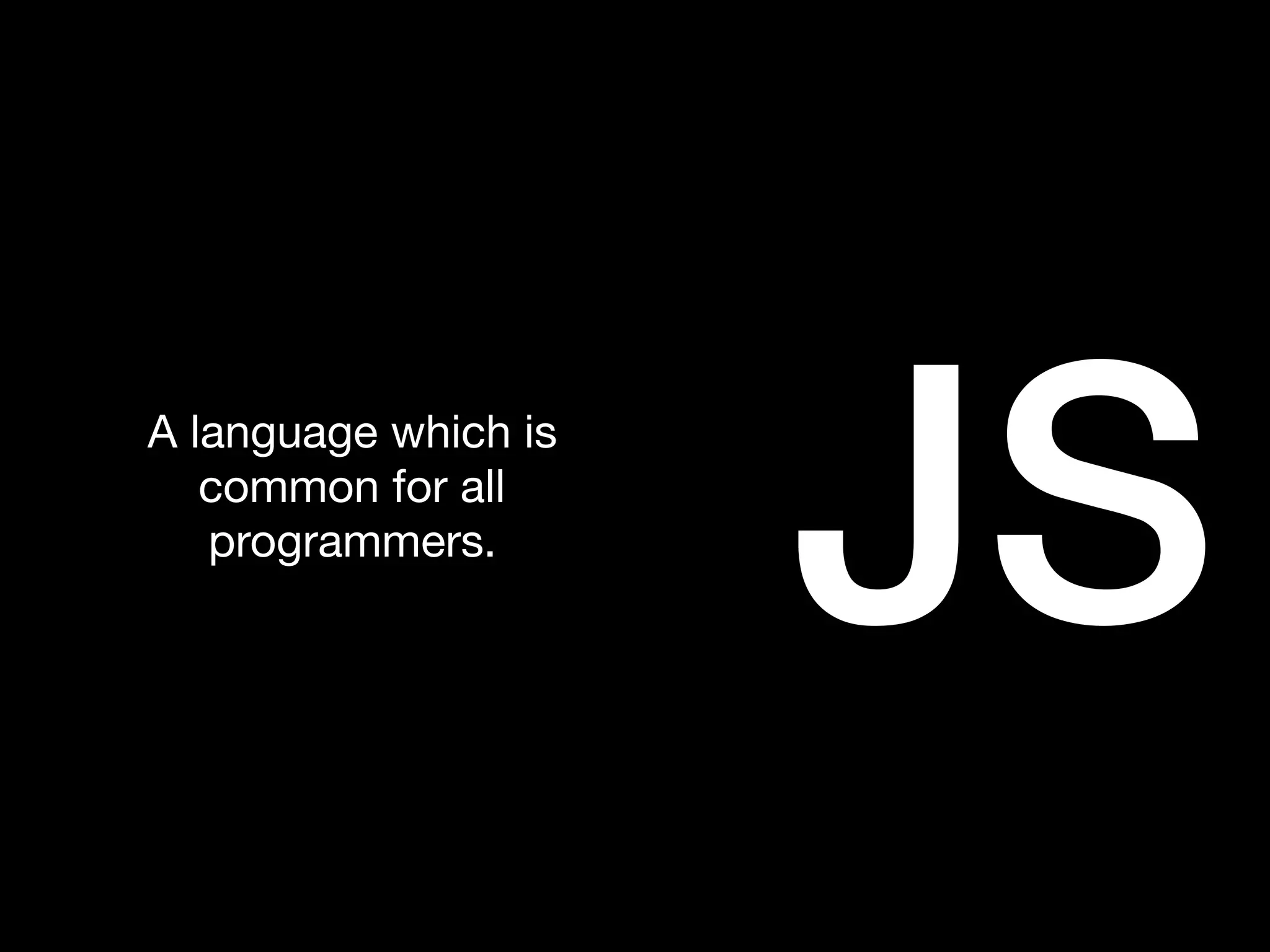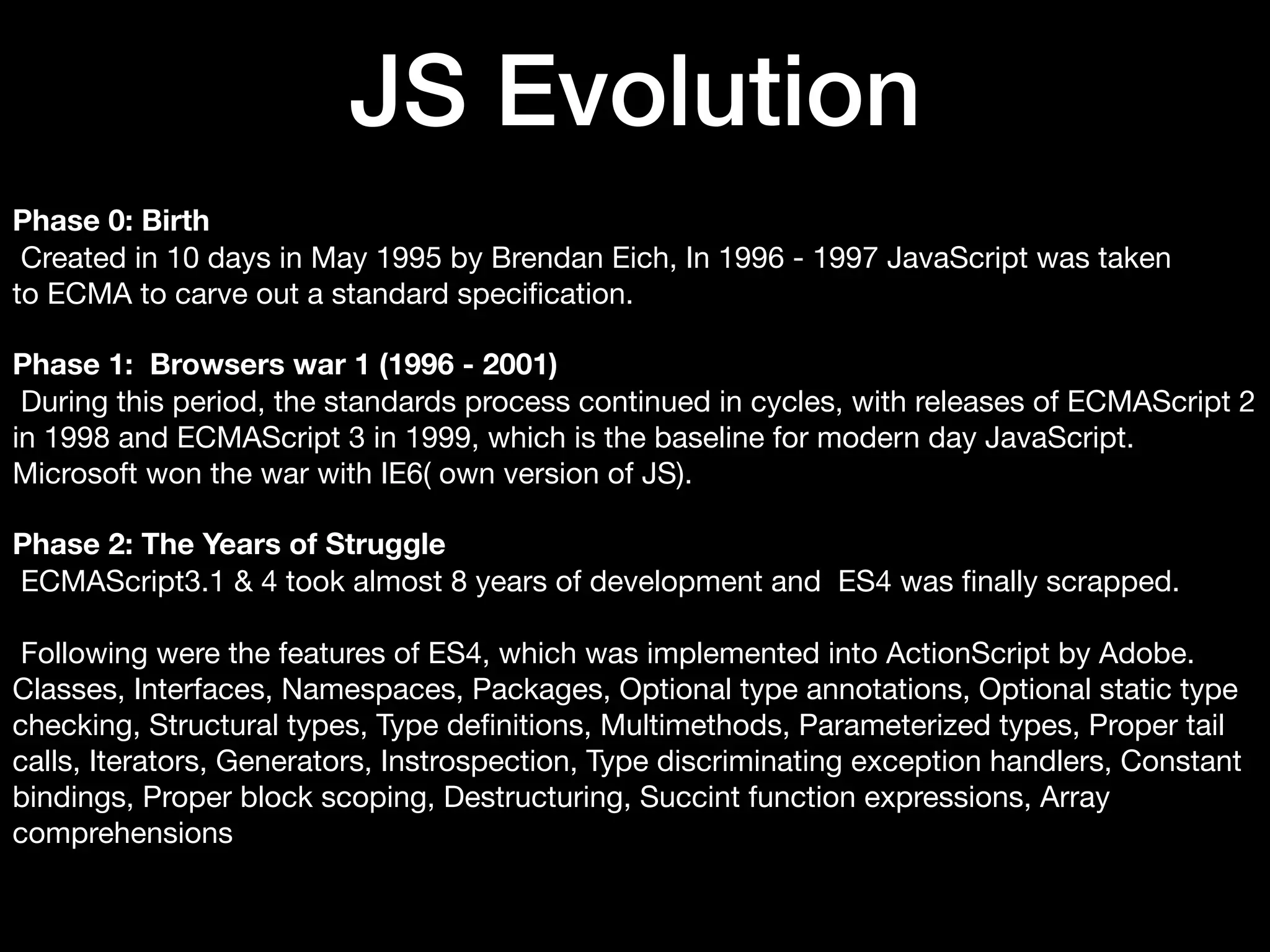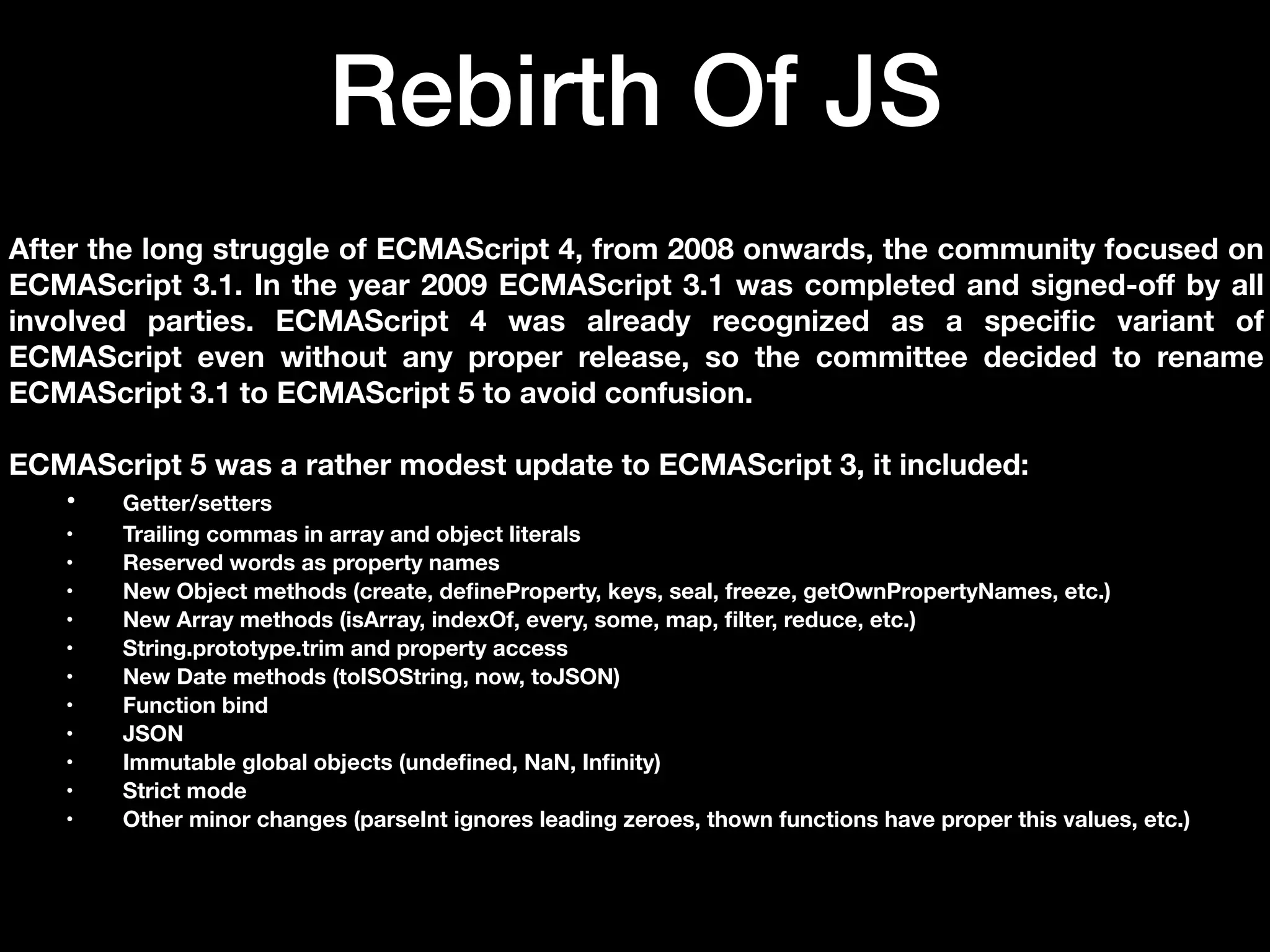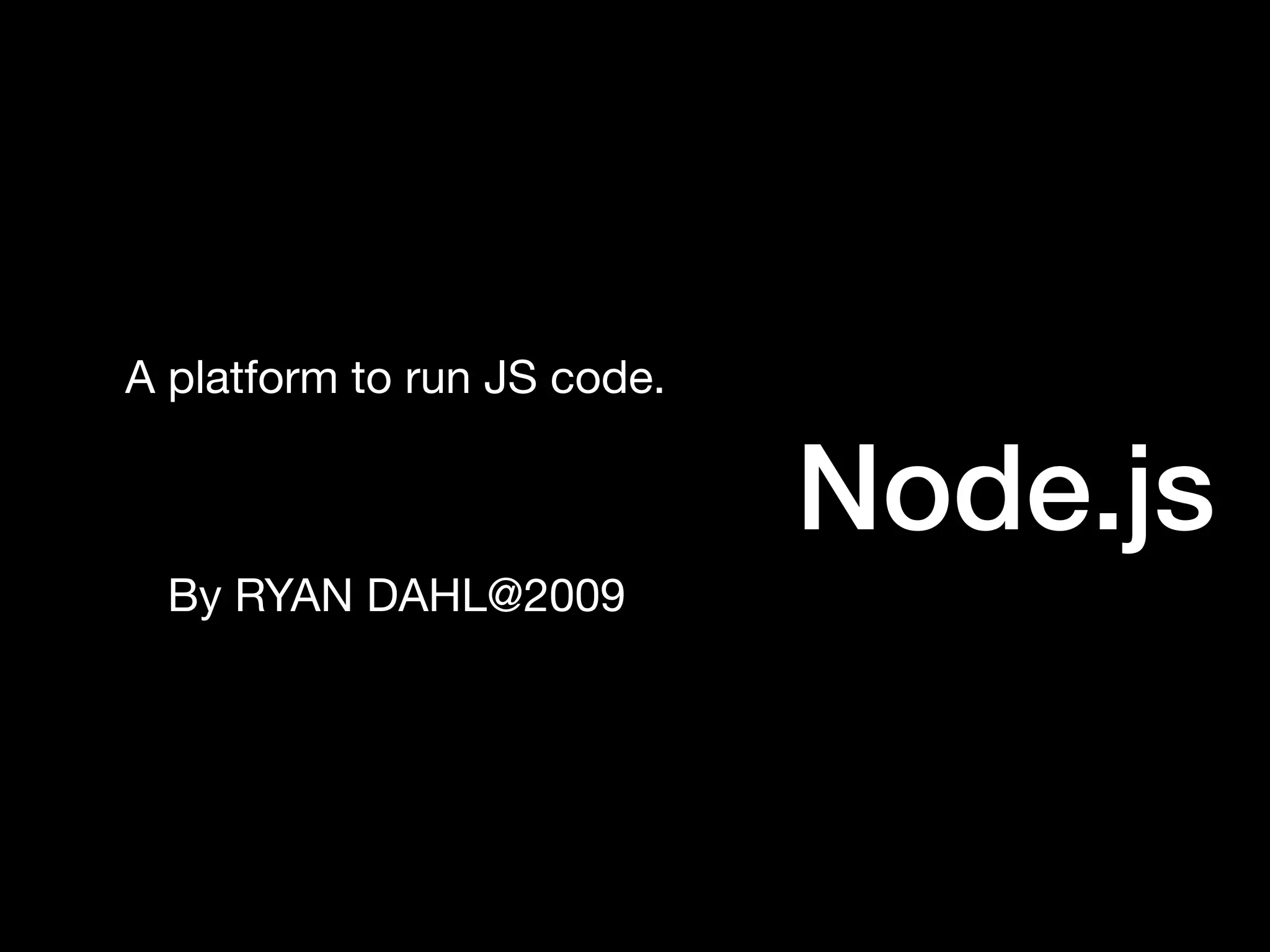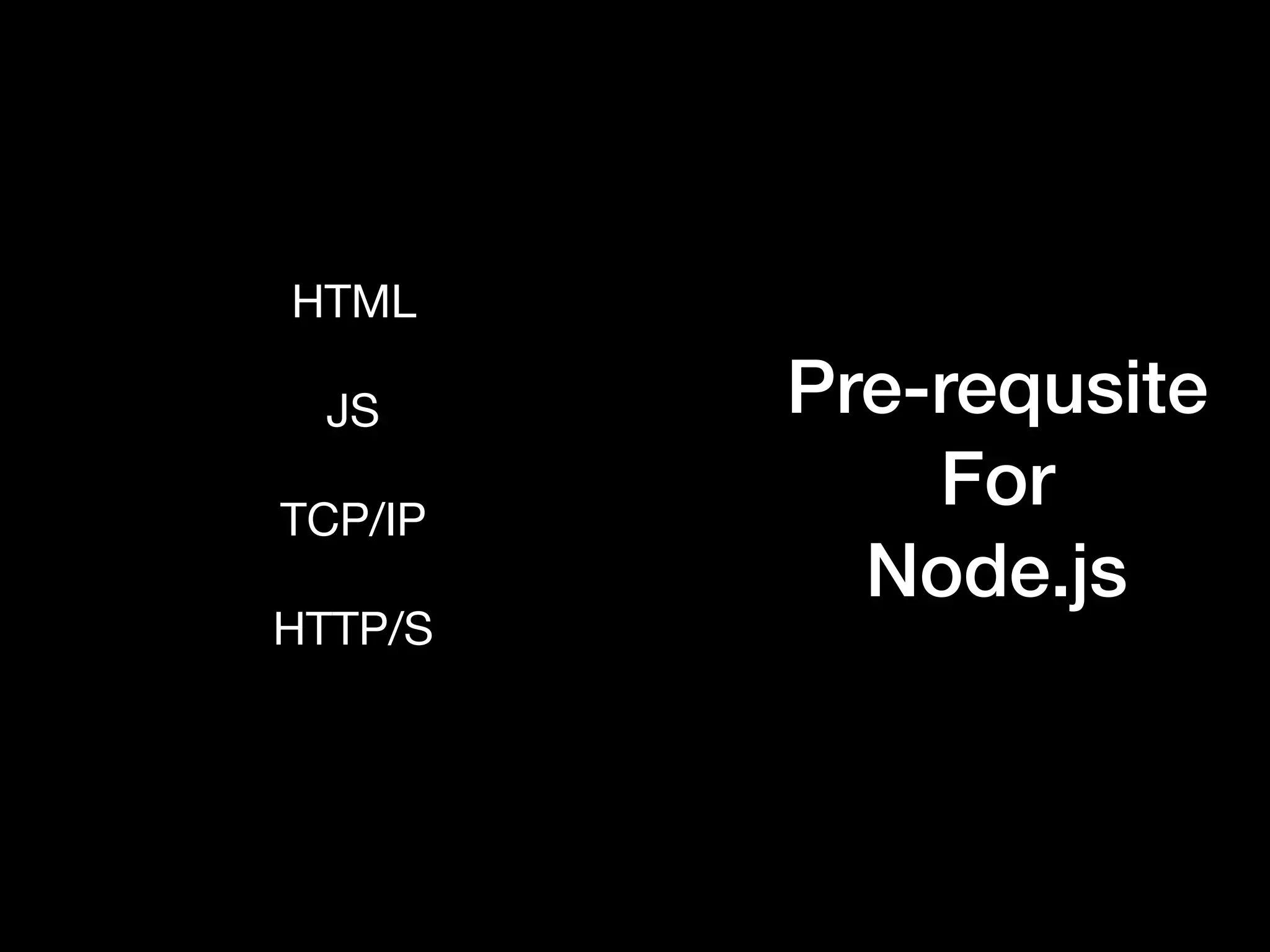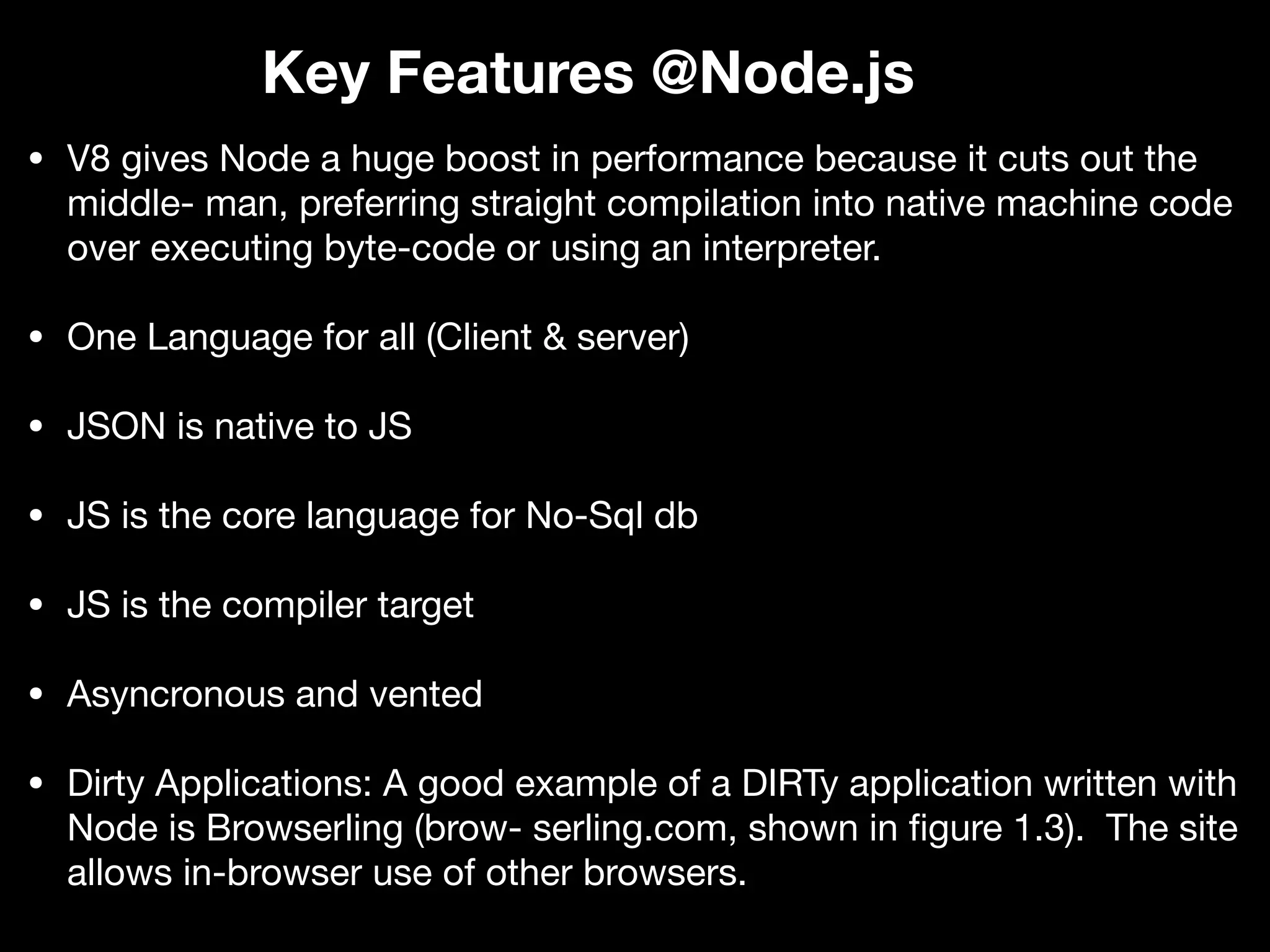This document provides an introduction to JavaScript and Node.js. It discusses the evolution of JavaScript from its creation in 1995 to modern standards like ECMAScript 5. Node.js was created in 2009 as a platform to run JavaScript code outside of browsers using an event-driven, non-blocking I/O model. Popular JavaScript engines include V8, SpiderMonkey, and JavaScriptCore. Node.js allows building fast, scalable network applications using a single programming language across client and server environments.

